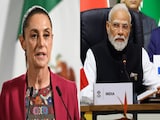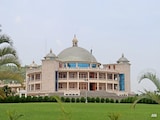In a significant reflection of the country's economic progress, the per capita monthly household consumption expenditure (MPCE) has more than doubled from 2011-12 to 2022-23, according to the latest Household Consumption Expenditure Survey (HCES). Based on data collected from 2,61,746 households (1,55,014 in rural areas and 1,06,732 in urban areas) across all states and Union Territories, the report highlights key changes in consumption patterns, underscoring the country's evolving socio-economic landscape.
Rising Expenditure: A Sign of Improved Living Standards
The average MPCE for rural households surged to Rs 3,773 in 2022-23, up from Rs 1,430 in 2011-12. Similarly, urban households witnessed a rise to Rs 6,459 from Rs 2,630 in the same period. This substantial increase indicates improved living standards, with households now spending more on non-food items such as education, healthcare, and durable goods.
Urban-Rural Divide in Consumption Patterns
Despite the overall increase, a significant urban-rural divide persists. Urban households consistently spend more than their rural counterparts across all fractile classes. For instance, the top 5 per cent of urban households have an average MPCE of Rs 20,824, nearly double the Rs 10,501 for the top 5 per cent in rural areas. Even among the lowest 5 per cent, urban households spend Rs 2,001 compared to Rs 1,373 in rural areas.
Detailed Insights from Fractile Analysis
The report's detailed fractile analysis reveals the distribution of expenditure across different socio-economic segments. A fractile class is like dividing the population into smaller groups based on how much they spend. For example, if we imagine dividing everyone into ten equal groups, the bottom group (0-10 per cent) spends the least, and the top group (90-100 per cent) spends the most. The data shows that while the wealthiest segments of the population have seen the most significant increases in consumption expenditure, there has been a rise across all classes, reflecting broader economic growth.
The poorest 5 per cent of rural households spend Rs 1,373 each month, while the poorest 5 per cent of urban households spend Rs 2,001.
The richest 5 per cent of rural households spend Rs 10,501 each month, whereas the richest 5 per cent of urban households spend Rs 20,824.
Shift In Consumption Patterns
A notable trend in the report is the shift from food to non-food expenditure. Over time, households are spending a smaller portion of their budgets on food and more on other items and services. For instance, in rural areas, the average spending on food has decreased, while expenditure on non-food items, such as education, healthcare, and durable goods like appliances and electronics, has increased.
This shift indicates that people have more disposable income and are prioritizing different aspects of their lives. The report shows that rural households now spend Rs 3,773 on average each month, with a larger share going to non-food items compared to the past. Similarly, urban households, with an average monthly expenditure of Rs 6,459, are also allocating more of their budget to non-food expenses. This change reflects improved living standards and evolving lifestyle preferences across the country.















